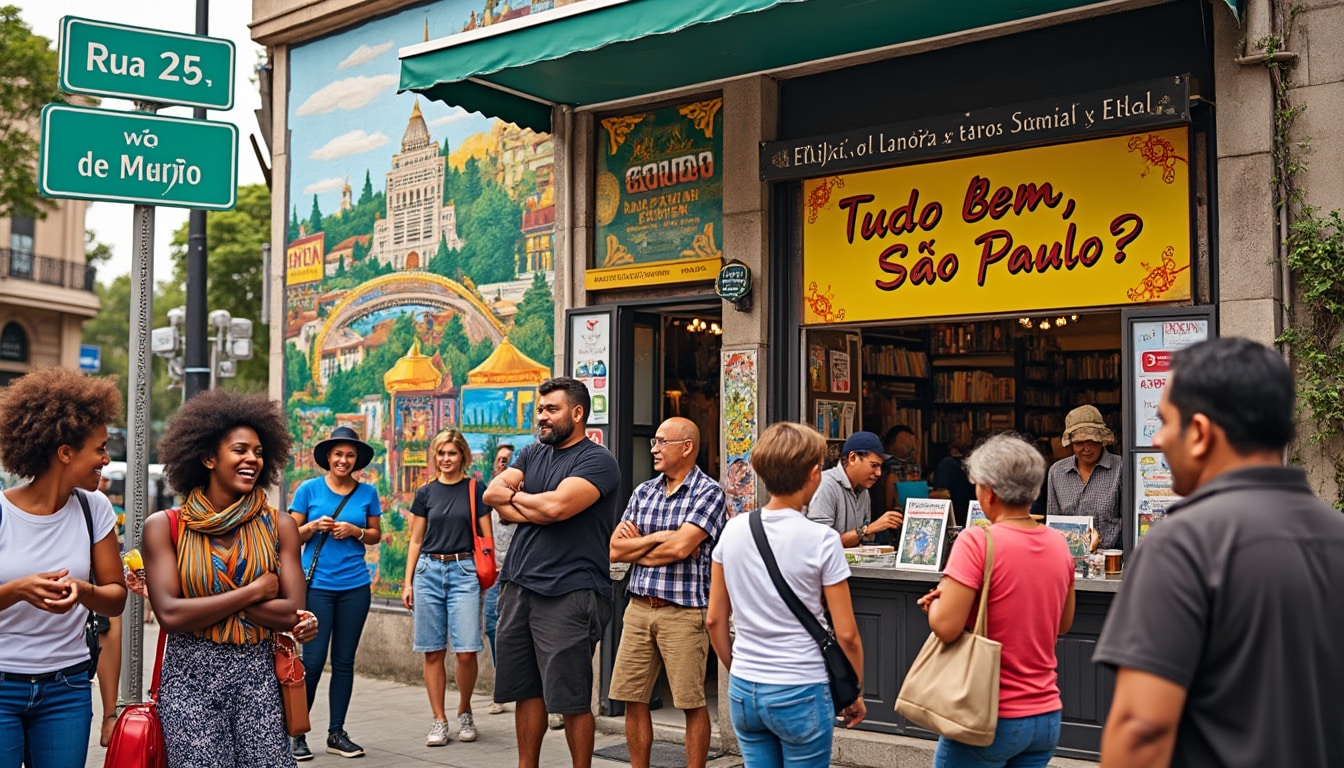São Paulo, Brazil’s largest and most bustling metropolis, serves as a vibrant tapestry of language and culture. Nestled in the heart of the nation, this city is a linguistic conundrum, reflecting Brazil’s diverse heritage through its unique spellings and pronunciations. With its rich cultural fabric and melting pot of languages, São Paulo offers a fascinating insight into Brazil’s linguistic evolution and the nuances of its primary tongue, Portuguese. From the official language to the influence of other global tongues, São Paulo’s language landscape is as diverse as its populace. With spellings like “Sao Paulo” and “São Paulo,” the city not only challenges language norms but also serves as a cultural beacon for both locals and international visitors.
Understanding the Linguistic Tapestry of São Paulo
São Paulo is a metropolis where the harmony of languages reflects the cultural diversity found within its confines. The principal language spoken here is Portuguese, a legacy of colonial history that ties Brazil to the Iberian Peninsula. However, the Portuguese spoken in São Paulo is not just a direct copy of its European counterpart but has evolved with its own distinct accent, phrases, and idiosyncrasies.
This linguistic adaptation is best represented by the Sao Paulo Language Academy, a hub for language enthusiasts and linguists alike, offering insights into how Portuguese morphs in urban settings. The Academy showcases how accents change in different neighborhoods of São Paulo, influenced by immigrants from Japan, Italy, Lebanon, and more. These communities contribute to the linguistic mosaic, creating a unique blend of sounds that is neither entirely European Portuguese nor a separate dialect.
In São Paulo, Portuguese harnesses a myriad of influences, including Spanish and Italian due to migration patterns. In this vibrant city, it’s common to hear a mélange of languages on the streets – a testament to its global character. The emergence of English as a second language has further diversified the city’s linguistic landscape. Institutions like Sao Paulo English School and LanguaLearn Sao Paulo have popped up to accommodate the increasing demand for English fluency in business and academia.
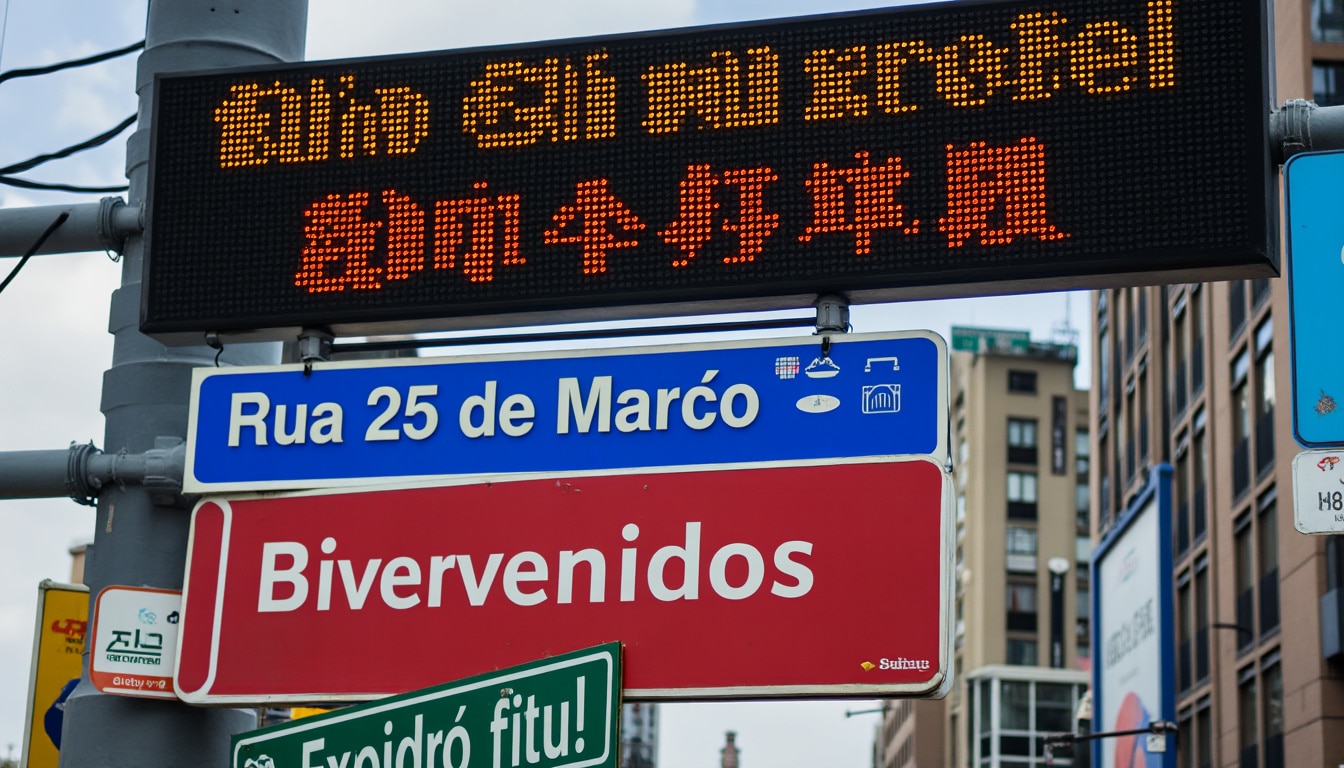
The Role of Portuguese as a Lingua Franca
Portuguese remains the primary language, owing much to its role in government, education, and media. Explore a ride along a typical São Paulo street and you’ll hear Portuguese underpinning everyday interactions. However, there’s an interesting phonetic dance at play; Portuguese in São Paulo dances to a rhythm distinctly its own, marked by the pronunciation of the letter “d” almost as a “j” before certain vowels—a technique taught by courses like Fluent Portuguese Solutions.
Despite the dominance of Portuguese, São Paulo thrives on linguistic diversity. Migrant languages enrich the soundscape—such as Japanese spoken in Liberdade or Italian in Bixiga—but for official purposes and inter-community dialogue, Portuguese acts as the unifying thread.
Spellings: A Tale of Two Names – Sao Paulo vs. São Paulo
At first glance, the difference between “Sao Paulo” and “São Paulo” may appear trivial, but it epitomizes a deeper cultural and orthographic distinction. The accentuation—with the tilde in “São”—is a fundamental aspect of Brazilian Portuguese, signaling pronunciation variations essential for correct communication and cultural identity.
The absence of a tilde in “Sao” is an anglicization, influenced by typing convenience and international standards, yet it diverges from accurate representation. For instance, the Brazilian Language Institute often emphasizes the importance of correct diacritical marks in Portuguese education to maintain authenticity in linguistic expressions.
| Word | Correct Form | Explanation 🌍 |
|---|---|---|
| Sao Paulo | São Paulo | Lacks the tilde, impacting correct pronunciation |
| Brasil | Brazil | Anglicized spelling for international use |
| Portuges | Português | Accented “ê” for accurate representation |
Historically, the shift in spelling has its roots in global interactions and the necessity of fitting Brazilian locales into a broader linguistic setting, like on maps and in international communications. However, whether spelled or pronounced, the rich cultural essence of São Paulo remains unaltered.
The Impact of Language Schools and Academic Institutions
São Paulo’s dynamic environment requires its residents to become linguophiles out of necessity. Its cultural plurality is mirrored in its commercial landscape, providing fertile ground for numerous language schools and exchange programs. Centers like Sao Paulo Grammar Center and PortuSpeak Sao Paulo play significant roles in equipping locals and expatriates with multilingual prowess.
These establishments are crucial not just for local citizens but for international visitors eager to grasp the local language nuances. From primary schools introducing basic English to language exchange meet-ups at cafes—language acquisition bonds communities, promotes understanding, and fosters economic growth.
Such a bilingual atmosphere is augmented by organized events like the Spelling Bee Brazil, which not only celebrate linguistic skills but also underscore the importance of language in preserving cultural identity. Various academic institutions foster not just language learning but cultural exchange, making São Paulo an epicenter for linguistic innovation in Brazil.
For travelers or newly arrived residents, engaging with community language programs can be both enlightening and necessary. Whether through formal education systems or informal gatherings like the Sao Paulo Language Exchange, integrating into the social fabric of the city requires navigating its language waters.
The Cultural and Historical Influence on Language Evolution
São Paulo’s linguistic landscape cannot be separated from its cultural history. Originally inhabited by the Tupi-Guarani tribes, the region’s language evolved with shifts in power and population. When colonized by Portugal, linguistic exchange began shaping modern Portuguese.
- ⭐ Indigenous Influence: Core vocabulary in Brazilian Portuguese.
- ⭐ European Contributions: Language layers added through immigration.
- ⭐ Modern Global Influence: Integration of English as a business lingua franca.
This continuous evolution reflects in everyday communication, as noted among institutions like the Speak Brazilian Portuguese, where instructors elucidate the transition from indigenous tongues to contemporary Portuguese.
Additionally, São Paulo serves as the cultural bedrock for Brazil’s holidays and celebrations, where language plays a pivotal role in preserving traditions and heritage. From festival chants to community stories, each word and accent adds vibrancy and depth to the city’s history.
| Historical Era | Language Influence | Impact on São Paulo’s Culture 🎉 |
|---|---|---|
| Pre-Colonial | Tupi-Guarani | Indigenous names and phrases |
| Colonial | Portuguese | Foundational language structure |
| Modern | Global/English | Increased cross-cultural communication |
Considering the cosmopolitan fabric of São Paulo, language is more than just a communication tool—it’s an enduring pillar of cultural expression. Journey through daily life or mealtimes, and each interaction reveals a story written in dialects and idioms influenced by the city’s past.
Frequently Asked Questions about São Paulo’s Language
- Is São Paulo’s language environment supportive of English speakers? 🌟 Yes, while Portuguese predominates, many young people and tourists speak English, especially in business districts.
- How does São Paulo’s Portuguese differ from that of Portugal? 🌟 São Paulo’s Portuguese incorporates local slang, accent shifts, and regional vocabulary, diverging from European Portuguese.
- Are there any free resources to learn Portuguese in São Paulo? 🌟 Yes, numerous online platforms and local community classes offer free introductory courses.
- What are some key language etiquettes in São Paulo? 🌟 Using formal greetings and attempting Portuguese even at a basic level is appreciated.
- How important are language schools in São Paulo? 🌟 Highly essential, they provide vital language skills necessary for both personal and professional integration.
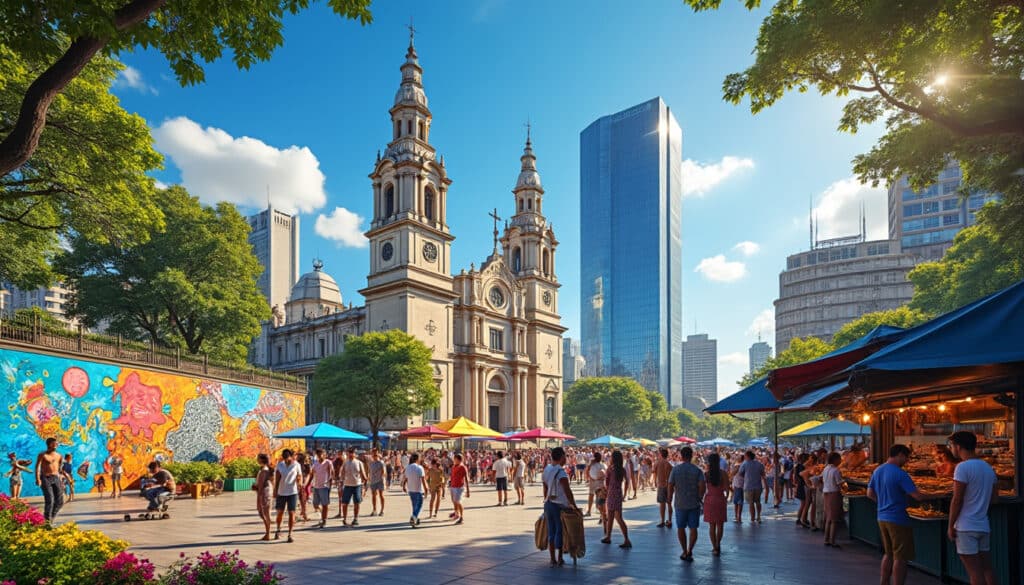
Fun Facts & Curiosities About Sao Paulo
Explore the vibrant landscape of São Paulo, a city teeming with hidden stories, cultural milestones, and urban legends. From its unexpected climate events to its pivotal role in the art world, São Paulo exudes a mix of history and modernity…

Architecture and urban features of Sao Paulo
São Paulo, a sprawling metropolis in Brazil, is a fascinating confluence of modernist innovation and cultural vibrancy. Founded on the riches of coffee plantations, the city swiftly evolved into a cosmopolitan hub, attracting architectural visionaries who contributed to its remarkable…

São Paulo, with its sprawling urban landscape and effervescent energy, is a city that pulsates with the rhythm of life. With a population surpassing 12 million people, it’s known for being a melting pot of cultures, rich history, and dynamic…
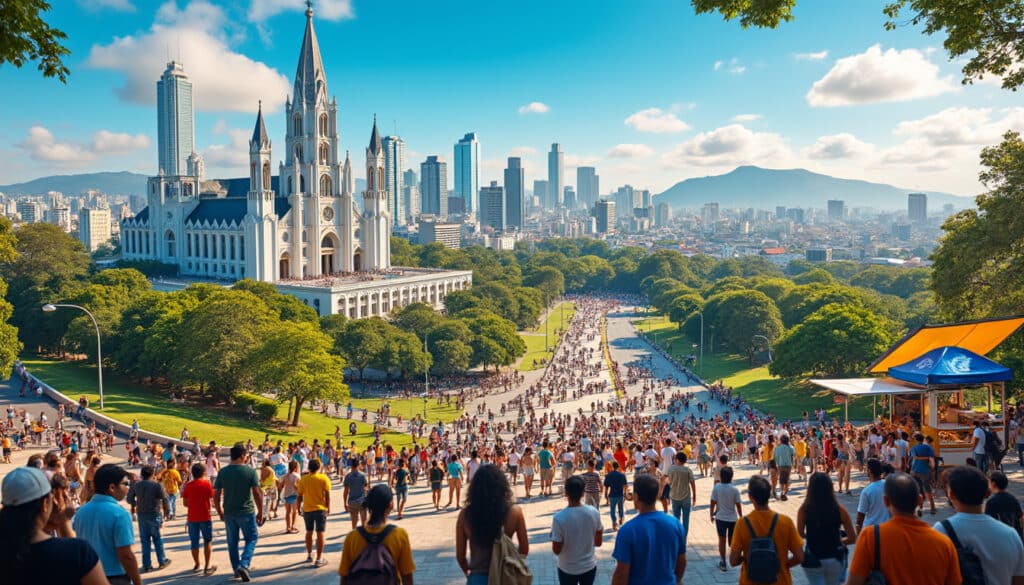
Demographics and geography of Sao Paulo
São Paulo, the vibrant heart of Brazil, is not merely a bustling economic powerhouse but a fascinating mosaic of geographical wonders and diverse demographics. From the rolling plains of its inland plateau to its rich coastal ecosystems, São Paulo forms…

Holidays and celebrations in Sao Paulo
São Paulo, the bustling metropolis of Brazil, is renowned for its vibrant culture and dynamic celebrations. Throughout the year, the city buzzes with energy from a myriad of events and festivals that highlight its diverse cultural heritage and communal spirit.…

Local tips for tourists in Sao Paulo
São Paulo, a vibrant and sprawling metropolis in Brazil, is an intriguing destination for travelers seeking cultural diversity, culinary delights, and architectural marvels. Known for its pulsating energy and eclectic neighborhoods, the city offers a plethora of experiences waiting to…
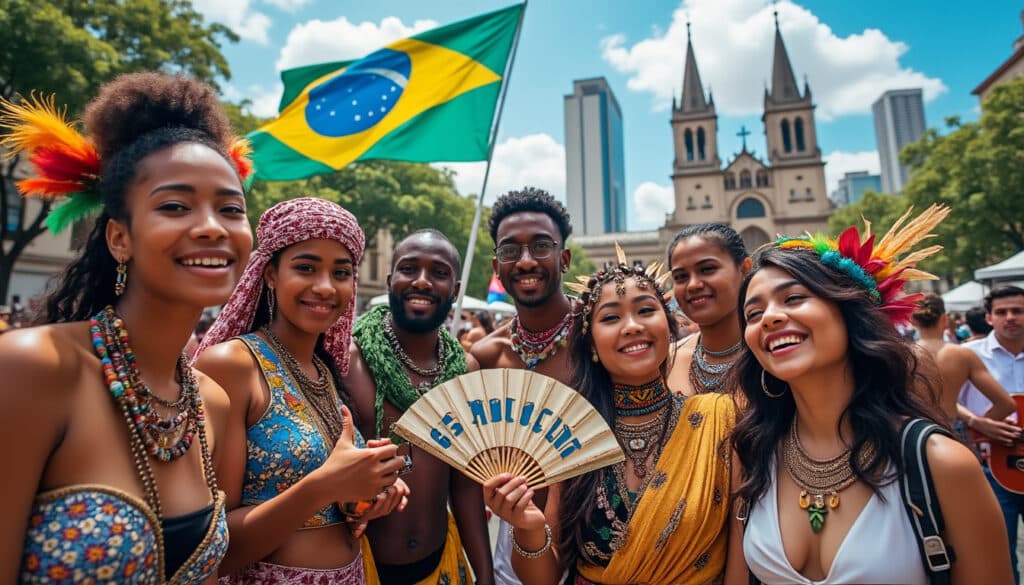
Names, flags, and identity of Sao Paulo
With a rich tapestry of cultural influences, São Paulo stands as a dynamic symbol of Brazil’s vibrant history and contemporary diversity. The names and flags associated with this colossal city intertwine both the past and the present, reflecting the multitude…

Reputation and identity of Sao Paulo
Boasting a cosmopolitan charm and a thriving cultural landscape, São Paulo stands as Brazil’s busiest metropolis. Its identity and reputation have been shaped by centuries of cultural, economic, and intellectual development. From its vibrant festivals and diverse cuisine to its…
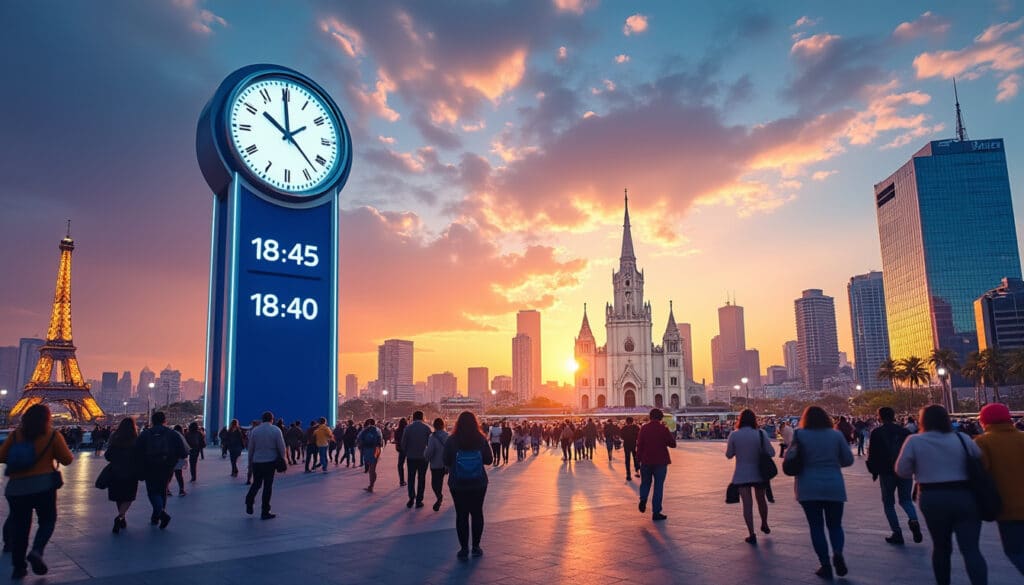
Time and time zone in Sao Paulo
✨ Amidst the vibrant chaos of São Paulo lies a fascinating aspect that ensures the city runs smoothly: its time zone. This bustling metropolis is known for its electrifying urban culture, pulsating nightlife, and economic significance. However, understanding the time…

Unusual facts and social issues in Sao Paulo
Embracing a mix of tradition and modernity, São Paulo, Brazil’s bustling metropolis, stands as a vibrant canvas for unexpected stories and complex social dynamics. While it’s famed for its economic significance and cultural pulse, São Paulo is also a city…
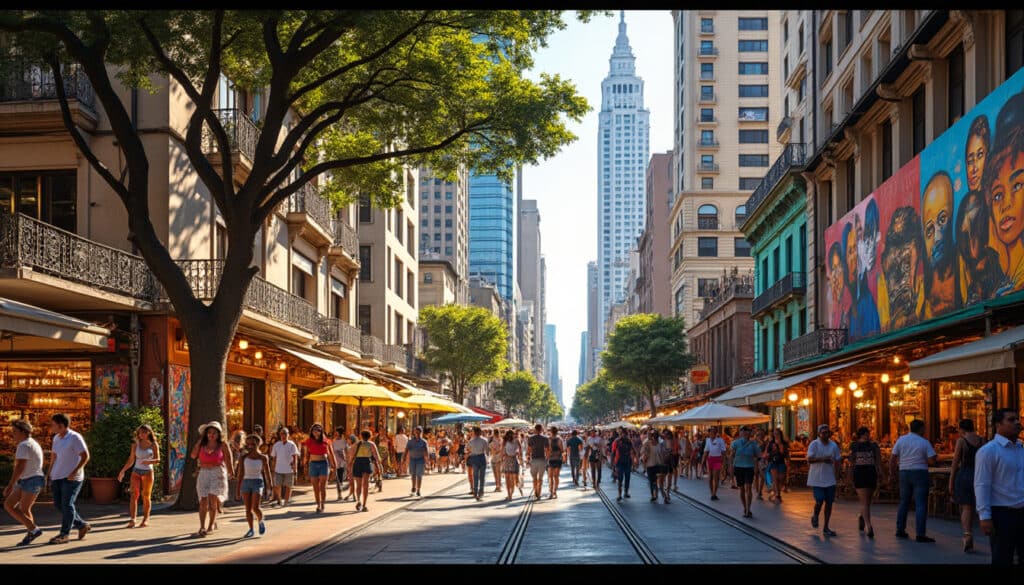
What does Sao Paulo look, smell, feel like?
São Paulo, with its towering skyscrapers, bustling markets, and a mix of graffiti-covered streets, is a cacophony of sensory experiences. This sprawling metropolis thrives with vibrant energy, echoing the diverse cultures that have shaped its identity over the years. It’s…

